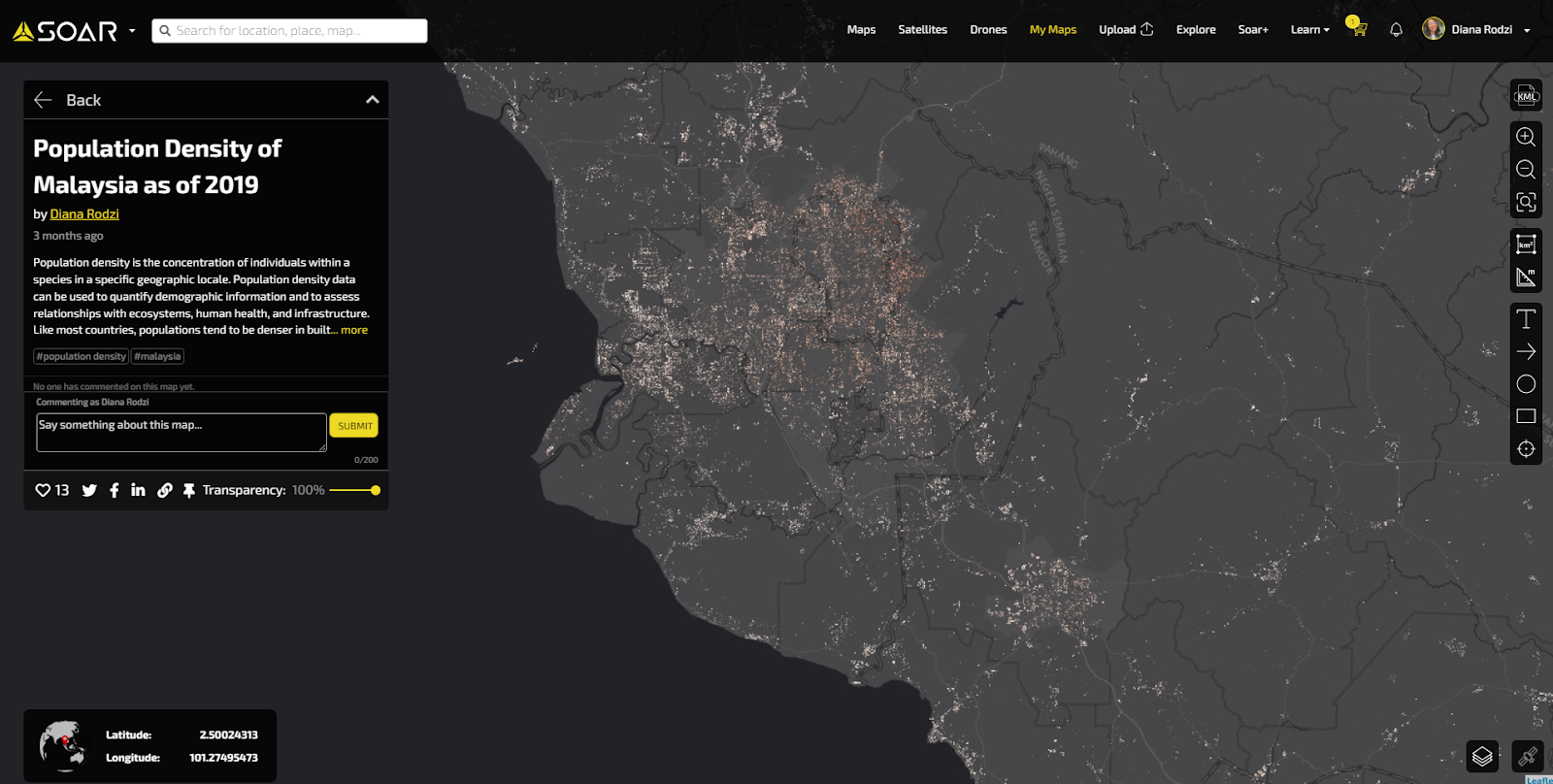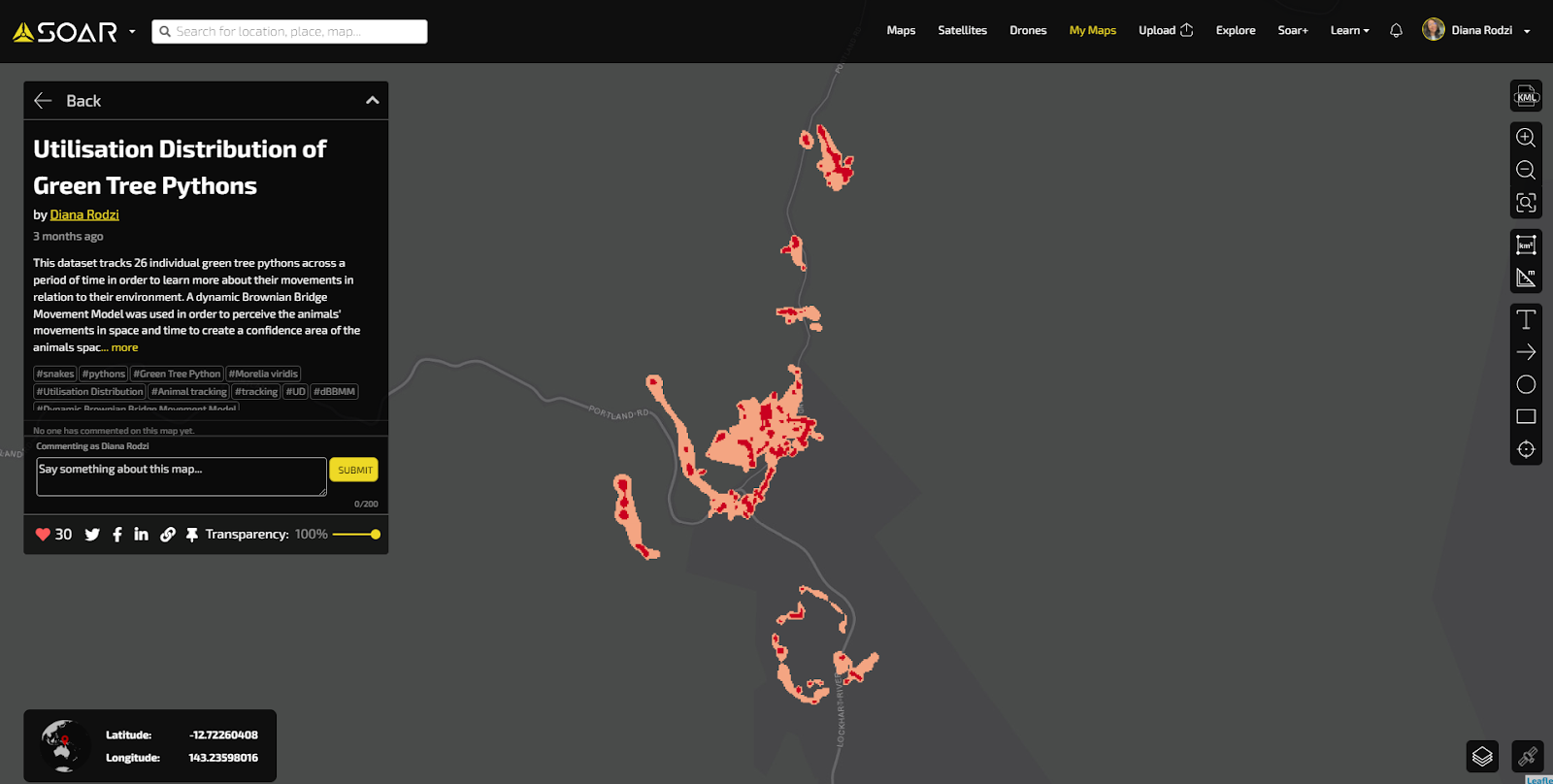The data is done, what happens next?
There is a myriad of analyses that can be done using GIS, ranging across all skill levels. Some of these include calculating elevation from a satellite image, creating a heatmap from human population data, or something as simple as creating a distance buffer from a ‘Roads’ layer.
Soar is a great platform to share the amazing work that you’ve done in GIS. Many users on Soar upload their maps and imagery so it’s seen on top of a base layer, similar to how you’d see it in the analysis process in GIS software.
Once your GIS analysis is complete, don’t let the data just sit on a file somewhere.
Upload it to Soar for everyone to view. You can even share it to your other social media straight from the platform. If you want to expand your knowledge on what GIS is capable of, check out some of the
maps already available on Soar and
explore the platform today.



